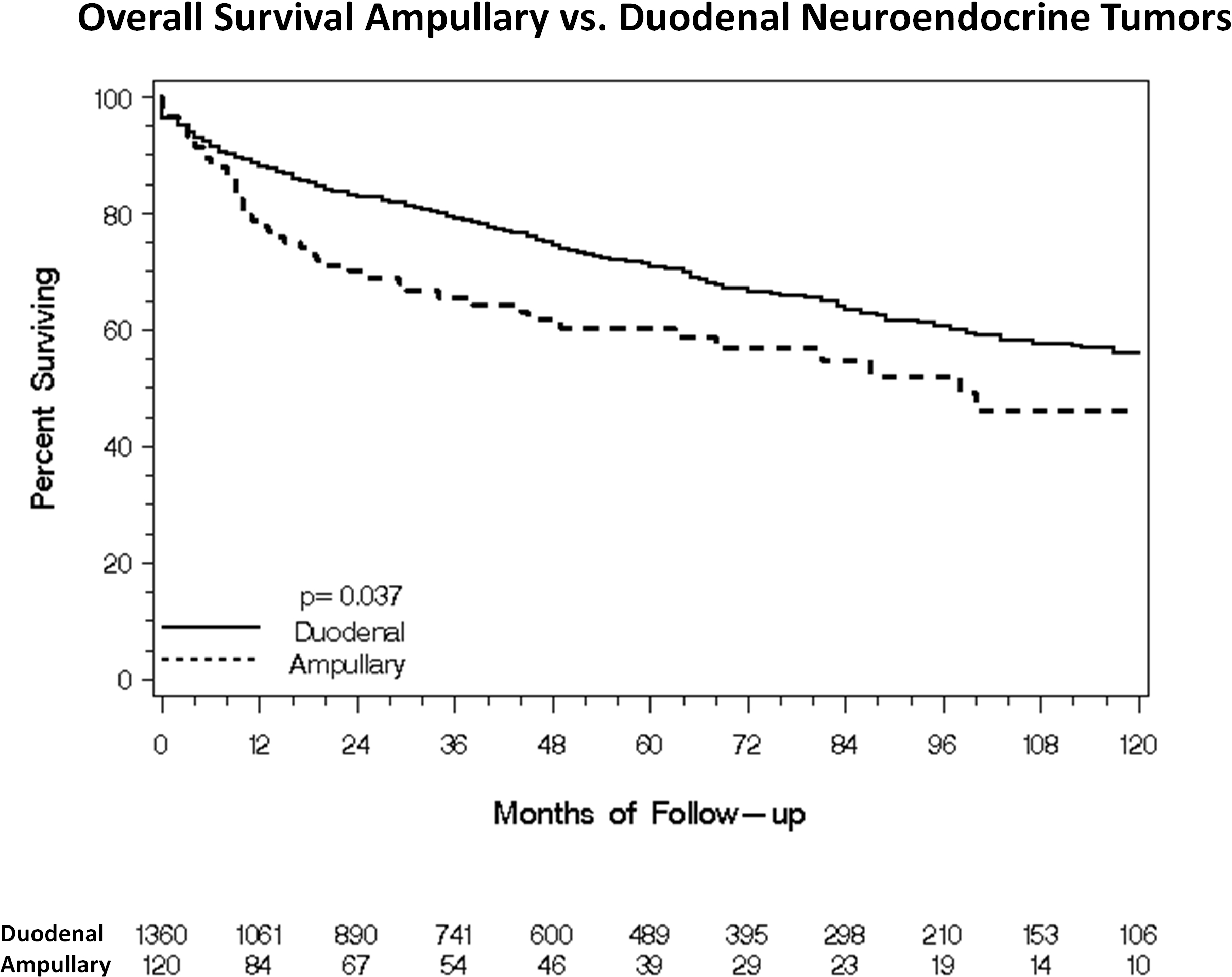|
|
Back to Annual Meeting Posters Clinical Outcomes for Neuroendocrine Tumors of the Duodenum and Ampulla of Vater: a Population-Based Study Reese W. Randle*, Shuja Ahmed, Naeem a. Newman, Clancy J. Clark General Surgery, Wake Forest Baptist Health, Winston Salem, NC
BACKGROUND: Neuroendocrine tumors (NETs) of the duodenum are quite rare representing only 4% of all carcinoid tumors. Limited single-institution case series indicated that ampullary NETs have worse survival than NETs located in the duodenum. The aim of the current study was to evaluate the overall survival (OS) of patients with ampullary NETs compared to patients with duodenal NETs using a population based registry. METHODS: We conducted a retrospective comparative cohort study using the Surveillance, Epidemiology, and End Results (SEER) registry from 1988 to 2009. Patients with pathology confirmed NETs of the duodenum and ampulla of Vater were identified, and overall survival was evaluated using Kaplan-Meier estimates and Cox proportional hazard regression. Multi-variable survival analyses included covariates with p < 0.1 and less than 10% of data missing. Back to Annual Meeting Posters
|
|||||||
© 2025 Society for Surgery of the Alimentary Tract. All Rights Reserved. Read the Privacy Policy.


